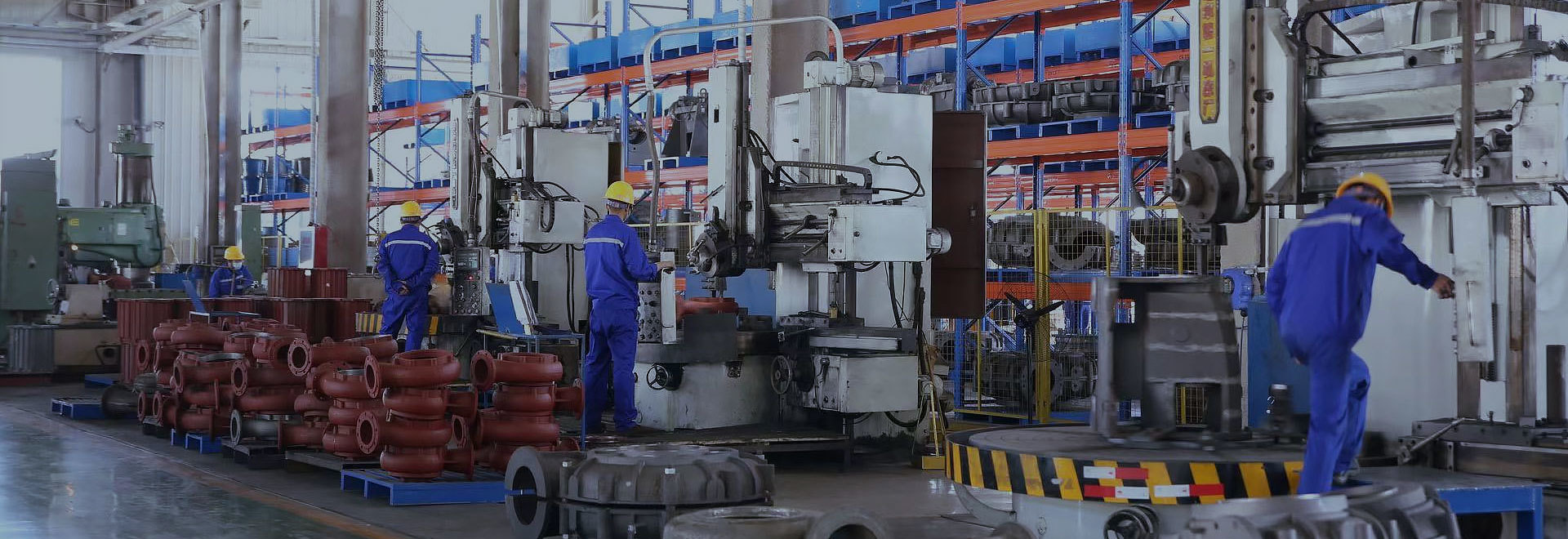Everything you need to know about slurry pumps in this article: (Shanglishi Pump’s Ultimate Explanation)
Published:
Oct 25,2025

A slurry pump, as its name suggests, is specifically designed for transporting Abrasive and corrosive slurry containing solid particles The centrifugal pump. It doesn’t fall under the category of clear-water pumps but is instead a core piece of equipment in the field of solid-liquid two-phase flow transportation.
Core Task : It’s not simply about boosting liquids—it’s about efficiently and reliably transporting mixtures of solid particles and liquids (commonly known as “slurry” or “mineral pulp”).
Key Challenges : Needs to withstand the intense impact caused by solid particles Wear and tear , Possible Corrosion , as well as preventing solid particles from clogging the flow channels.

The slurry pump is based on Centrifugal force The working principle is similar to that of a clean water pump, but its internal design and materials are specifically optimized for the characteristics of slurries.

- Power Input : The prime mover, such as an electric motor or diesel engine, drives the pump shaft and impeller to rotate at high speed via a coupling.
- Generate centrifugal force : The rotating impeller accelerates the slurry material between its blades, generating tremendous centrifugal force.
- Energy Conversion Under the action of centrifugal force, both the kinetic energy and pressure energy of the slurry are significantly increased.
- Exhalation and Inhalation High-pressure slurry is thrown from the center of the impeller toward its outer edge, where it is collected and guided by the volute or guide vanes before being discharged from the pump outlet. Meanwhile, a low-pressure or vacuum region forms at the center of the impeller, continuously drawing fresh slurry from the suction pipe into the system, thus maintaining a steady and uninterrupted pumping process.
The structural design of the slurry pump is aimed at addressing the three major challenges: wear, corrosion, and blockage.

1. Impeller : The core component, which is in direct contact with the slurry.
- Type : Divided into Closed system (High efficiency, suitable for slurries with smaller particles and lower abrasiveness), Open-type/Semi-open-type (Not easily clogged, suitable for slurries with larger particles or fibrous content.)
- Material : Typically, materials with high wear resistance or corrosion resistance are used, such as high-chromium cast iron, rubber, and ceramic composites.
- Features : Fewer blade, wider flow channels to minimize clogging.
2. Volute/Pump Casing : It accommodates the impeller and converts the kinetic energy of the slurry into pressure energy.
- Structure : Typically a spiral structure, also known as a "volute."
- Features : The inner wall is typically lined with replaceable components. Lining (Metal or rubber material), the liner can be replaced once it wears out, thereby protecting the pump casing itself, extending the overall pump life, and reducing maintenance costs.
3. Shaft Seal System : Prevent the slurry from leaking through the gap between the pump shaft and the pump casing.
- Secondary impeller shaft seal : By adding an auxiliary impeller to the back of the main impeller, reverse pressure is generated during rotation, preventing slurry leakage. This usually requires coordination with Packing Seal (Inject high-pressure clean water) for use, creating a "dynamic seal + parking seal." This is the most commonly used and reliable shaft sealing method for slurry pumps.
- Mechanical Seal : Suitable for applications with cleaner conditions and higher pressures, and it has specific requirements regarding the particle size of the slurry.
- Common forms :
- Features : The shaft seal is one of the weakest links in a slurry pump, making its selection critically important.
4. Bracket/Bearing Assembly : Supports the pump shaft and impeller, bearing both radial and axial loads.
- Features : Bearing specifications are typically larger and more robust than those of water pumps of the same size, designed to withstand the unbalanced forces and heavier loads associated with slurry conveyance.

- Heavy-duty structure : The overall structure is robust, designed to withstand harsh operating conditions.
- Replaceable lining : Wear-resistant components such as the pump casing and front and rear guard plates are replaceable, making them both economical and practical.
- Wide channel :The impeller and volute flow passages feature a wide design, ensuring excellent passability and strong resistance to clogging.
- Wear-resistant material : The flow-through components (impeller, liner, guard plates) are made from special wear-resistant materials.
- Multiple shaft seal options : Providing the most suitable sealing solution based on different operating conditions.


Slurry pumps can be classified according to their structure and installation method:

Horizontal Slurry Pump :
- Features :The most common type features a horizontally positioned pump shaft.
- Advantages : Easy to install and maintain, widely applicable, and available in a complete range of models.
- Disadvantages : It requires a certain amount of floor space.
Vertical Slurry Pump (Submersible Slurry Pump) :
- Features :The pump body operates while submerged in a liquid pool, such as a slurry tank or a sedimentation basin.
- Advantages : No priming required, no shaft seal issues (since the pump body is submerged in liquid), and features a compact design.
- Disadvantages : Maintenance is inconvenient (often requiring the impeller to be lifted out of the liquid), the bearings are positioned away from the impeller, and stability and alignment must be carefully considered during long-shaft operation.
Submersible Slurry Pump :
- Features :The motor is integrated with the pump body and operates entirely submerged in water.
- Advantages : Completely free of shaft seal issues, offering flexible installation and easy mobility, commonly used for riverbed dredging, emergency flood control, and drainage operations.
- Disadvantages : The motor demands extremely high sealing and insulation standards, and its cooling relies on the surrounding liquid.

Slurry pumps are critical equipment in the heavy industry sector, widely used in:
Mining Industry :
- Mineral Processing Plant : Transporting concentrate and tailings slurry.
- Coal mining : Transporting coal slurry, coal-water slurry.
- Gold mining : Transporting mineral sand.
Electricity Industry : Thermal power plants transport fly ash and desulfurization system limestone slurry.
Metallurgical Industry : Transporting smelting slag, steel slag, and more.
Dredging and Desilting : Dredging and desilting operations in ports, waterways, and lakes.
Chemical Industry and Building Materials : Conveying corrosive and abrasive chemical slurries, ceramic raw materials, cement slurry, and more.


Choosing the right model is key to ensuring long-lasting, high-efficiency operation of the slurry pump. When selecting a model, consider the following core parameters:

1. Slurry Characteristics :
- Solid particle concentration (Weight concentration or volume concentration).
- Solid Particle Characteristics : Particle size and distribution, particle shape, hardness, density.
- Liquid Properties pH value, temperature, and corrosivity.
2. Operating Condition Parameters :
- Traffic (Q) : The volume of slurry required to be conveyed per unit time (m³/h).
- Head (H) : The total head required by the pump (m).
- Rotational speed (n) : The wear life and performance of the pump are affected—typically, there’s a “critical speed” beyond which wear is dramatically accelerated.
3. Pump Type and Material Selection :
- Based on the slurry's abrasiveness and corrosivity, select either metal materials (such as high-chromium cast iron A05, A49) or rubber linings.
- Select a closed, open, or channel-type impeller based on particle size and fiber content.
- Depending on the installation environment, choose horizontal, vertical, or submersible type. 。
Important Concept: Net Positive Suction Head (NPSH) :
- Slurry pumps can also experience cavitation, and because the slurry has a higher density, the damage caused by cavitation is more severe. It is essential to ensure that the net positive suction head available (NPSHa) exceeds the pump's required net positive suction head (NPSHr), while also maintaining an adequate safety margin.

1. Correct Installation Ensure the inlet piping is smooth, avoid sharp bends, and minimize air intake.
2. Before Startup : Must Prime the pump Ensure the pump chamber is fully filled with slurry; dry running is strictly prohibited.
3. Operational Monitoring :
Closely monitor the motor Electric current (Reflective load), pump's Vibration and Noise (Indicating cavitation or uneven wear), Shaft seal water The pressure and flow rate (for the auxiliary impeller seal).
Regular maintenance :
- Regularly check bearing temperatures and replace the lubricating oil.
- Inspect the shaft seal condition and promptly adjust or replace the packing.
- Regularly inspect flow-through components such as impellers and liners. Gap , Excessive clearance can lead to reduced efficiency and increased vibration, so worn parts should be adjusted or replaced promptly.
Parking :
- Before prolonged parking, flush the pump chamber with clean water to prevent slurry from solidifying and forming scale, which could lead to difficulties when restarting or even damage the pump body.
A slurry pump is a sophisticated, highly specialized piece of critical industrial equipment. Its successful application depends on the careful... Slurry Properties Deep understanding of, Precise Selection 、 Appropriate material selection And Standardized Operation and Maintenance It is not a "general-purpose" device, but rather a solution tailored specifically for demanding, harsh operating conditions—playing an indispensable role in modern chemical and mining enterprises.

Keyword:
Slurry pump,Shanglishi Pump Industry
SHANGLISHI PUMP GROUP
Department Director: Ms. Wang
Tel: +86-311-82725800/82725629
Email: admin@sls-pump.com
WhatsApp: +86 15830676372
Mobile Website

Mobile Website
Copyright © 2022 SHANGLISHI PUMP GROUP


